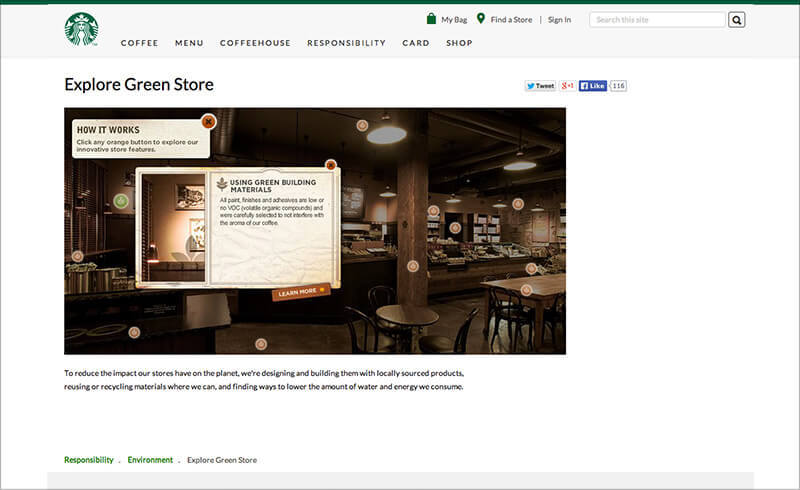Website Design for Corporate Social Responsibility
BLOG
BLOG

People are increasingly interested in how companies and corporations behave. Consumers and investors alike want to know the impact your company is having on the environment, the community, and the world.
When consumers seek out that information—they often turn first to the mighty interweb. When they can’t find CSR data online, they assume it doesn’t exist. So, if you’re not communicating your company’s social responsibility practices prominently on your website, consumers think you’re probably not practicing it at all.

Many consumers take companies' CSR habits into account when buying products and services.
For socially responsible companies, that’s bad news. You’re missing a huge opportunity to connect with consumers and deliver ROI on your CSR initiatives.
Here are actionable ideas for improving the way your website communicates corporate social responsibility:
On your website, put it the first place visitors look—the main navigation. Name it something that fits with the tone of the page. PepsiCo uses What We Believe; Sony and Gap keep it simple with Social Responsibility and Responsibility. Whatever you call it, make it prominent. Just having that link on the premium real estate of your website demonstrates to visitors that Social Responsibility is a priority.

The new normal: Displaying CSR intentions prominently in the main navigation.
Displaying CSR reports is great, but converting those reports into something consumers relate to is even better. Use people. Humans connect with faces—there’s something about them we like. Your company is helping people in the community, the environment, and the world—so this is a huge opportunity to demonstrate the proof of your numbers with a human presence.
Look to Gildan and H&M as examples. They’re telling that social responsibility story effectively. They use microsites to convey all aspects of social responsibility from the sustainability of their products to their involvement with community organizations and the way they treat employees. They put people at the heart of CSR communications with engaging imagery.
Starbucks is one of the best examples of a company effectively conveying their CSR story to consumers. One of the six main tabs of their site is Responsibility, anchored by a request for their users: “In 2008, we set our first multi-year goals for community involvement, ethical sourcing, and environmental impact. Help us determine where to focus our efforts going forward. Where can we go together? Send us your input at globalresponsibility@starbucks.com”. (See it here)

Starbucks is actually giving customers the opportunity to affect change. For millennials who love having a say in their brand, this is perfect. It gives them the opportunity to feel like they’re making a difference through the coffee brand they love so much.
Additionally, the coffee chain’s interactive store makes sustainability data tangible and gives users something relatable—a way to learn about the environmentally-friendly components of each physical store.

For even better CSR communication, create calls-to-action (CTAs) for your users. They’re already on your site consuming positive data about you’re company—so it’s a perfect time to offer them more and start an ongoing dialogue...“Send us your name and email address and we’ll...”
Some ideas:
These customers have good bull-shit-meters™, so remember through all your CSR communication to stay authentic. Along with areas where your company excels, be honest about areas needing improvement. They’ll appreciate the acknowledgement and will expect updates as you make changes.
If you tell your CSR story effectively, your customers will share it.
If you do not tell it well, they won’t.
And if you avoid it altogether, they will think you’re hiding something.
Blog
Newsflash: Social responsibility isn't limited to corporations.
Blog
Practicing and measuring CSR will gain importance in the year(s) to come.
Blog
A commitment to public benefit puts real meaning into our legal charter.